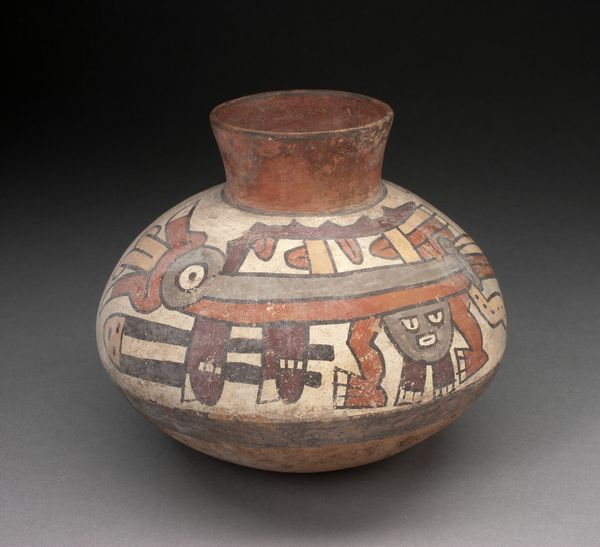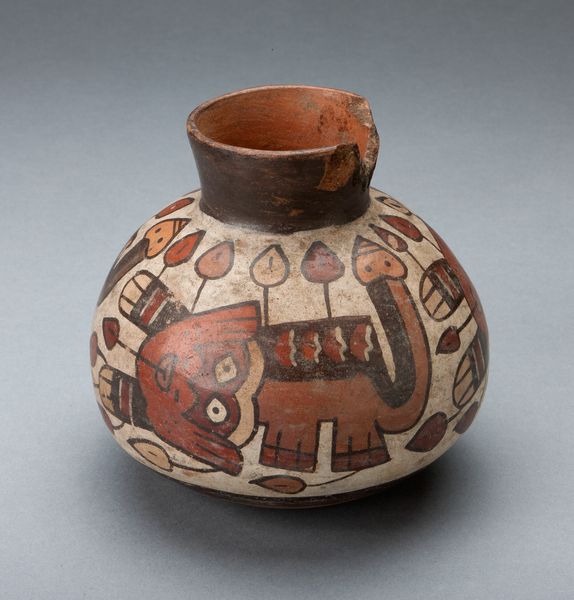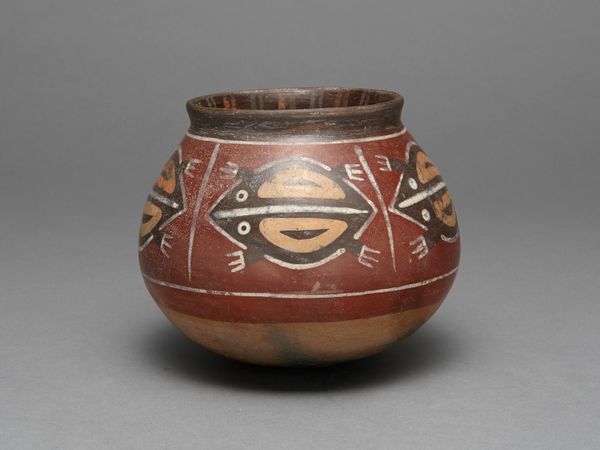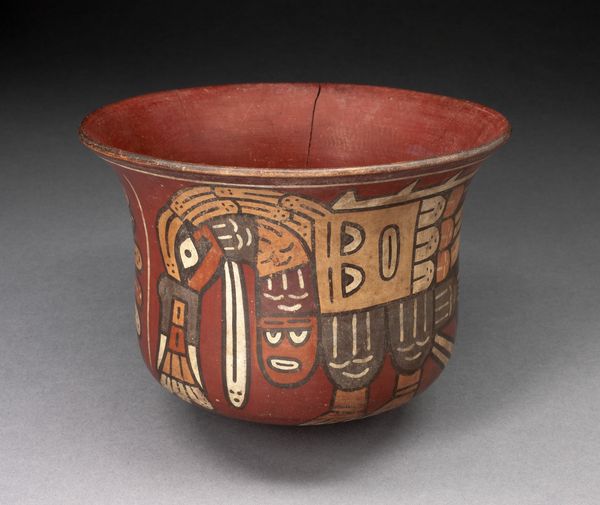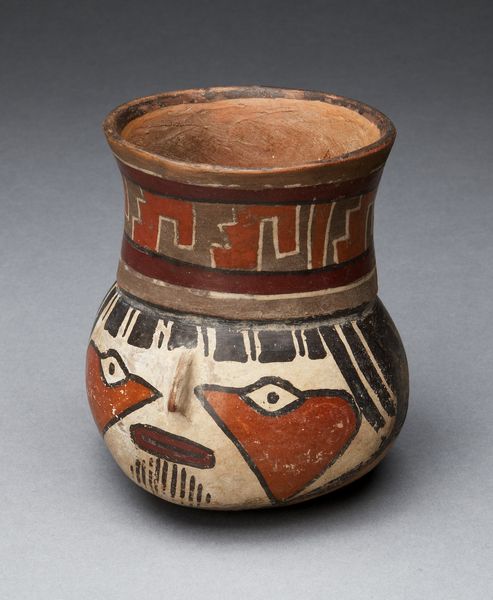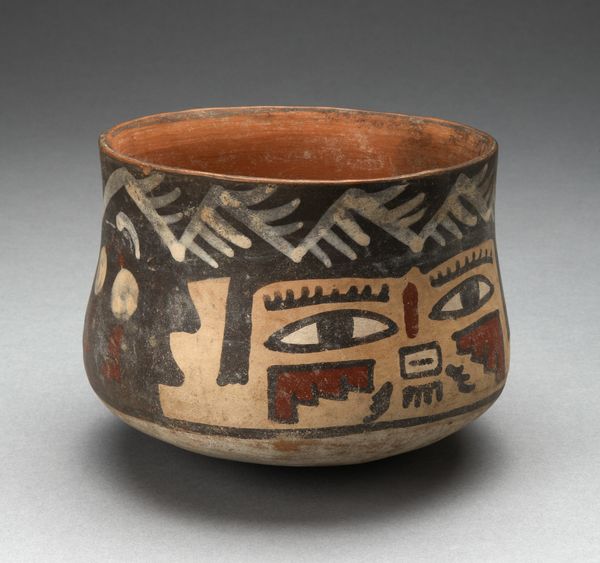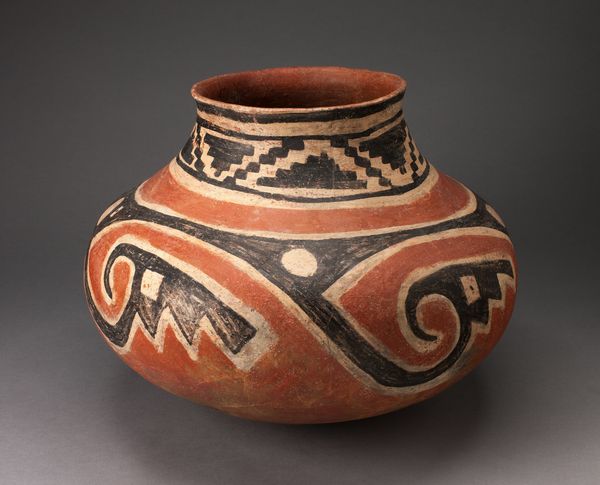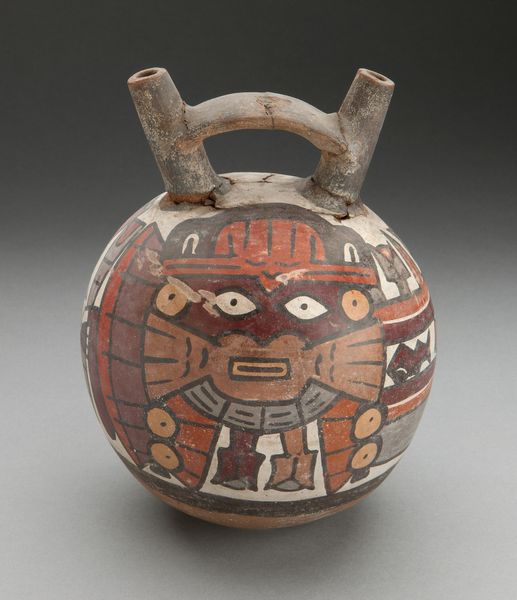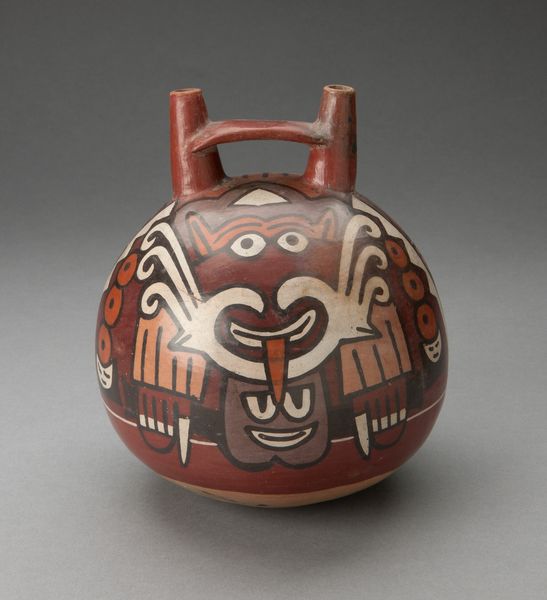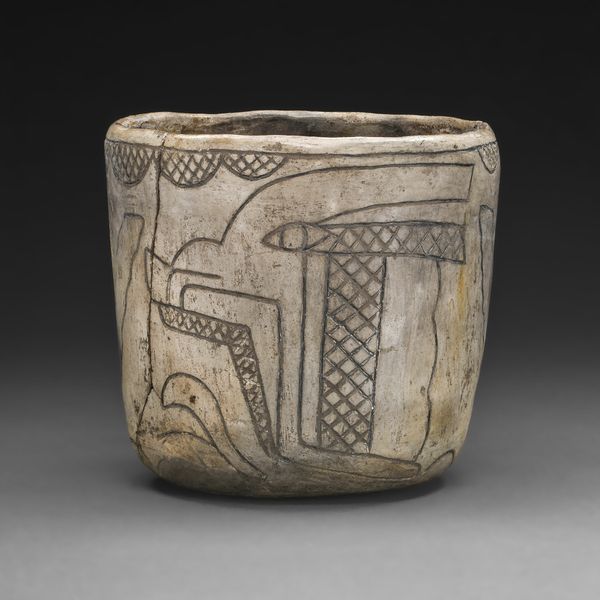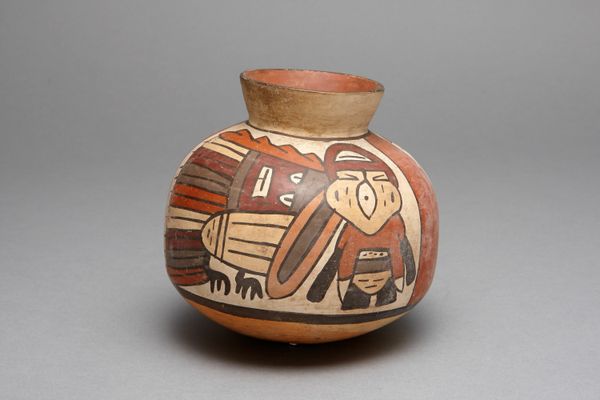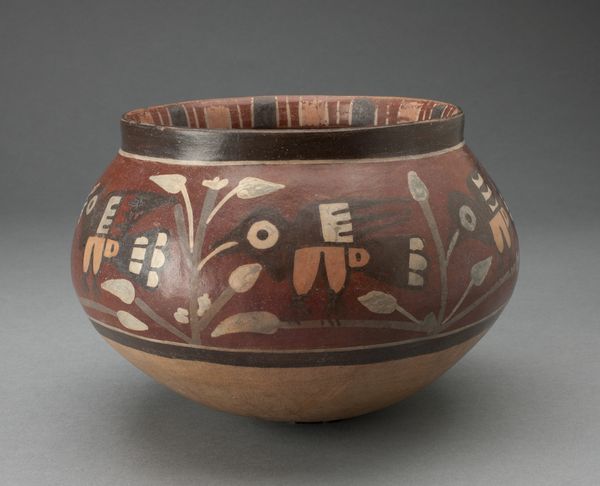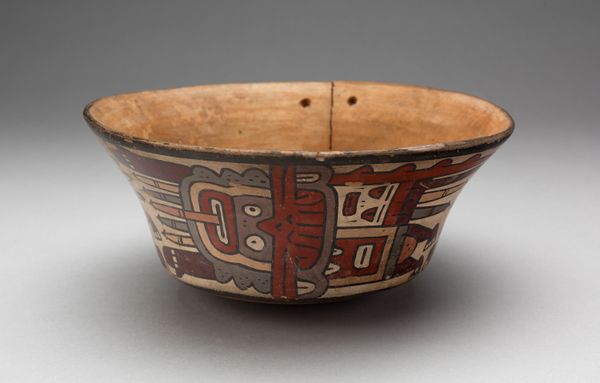
ceramic
#
ceramic
#
geometric
#
ceramic
#
decorative-art
#
indigenous-americas
Dimensions: 8 1/4 x 12 in. (20.96 x 30.48 cm)
Copyright: Public Domain
This olla, or water jar, was created by an A'shiwi (Zuni) artist, and resides here at the Minneapolis Institute of Art. As a utilitarian object, the olla represents the intimate connections between daily life, artistic expression, and cultural identity. The Zuni people, part of the Pueblo peoples, have inhabited the Zuni River valley in present-day New Mexico for thousands of years. Historically, pottery production was women's work, passed down through generations, and deeply intertwined with cultural and spiritual practices. The geometric designs, painted with great care, are not merely decorative; they hold symbolic meanings related to Zuni cosmology, nature, and social structures. Consider the way this olla contrasts with European pottery of the same era. Where one emphasizes utility or idealized form, the other emphasizes community, history, and the interconnectedness of life. The olla serves as a powerful testament to the endurance, resilience, and ongoing vitality of Indigenous traditions.
Comments
minneapolisinstituteofart almost 2 years ago
⋮
In the early 19th century, the A'shiwi (Zuni) were among the first Pueblo communities to integrate the black-on-white style of the Ancient Puebloan potsherds into their contemporary wares. The black-on-white style refers to the black designs painted onto the white body of the vessel. The design on this pot first appeared on A'shiwi water jars or ollas in the early 19th century and became popular in the 1870s. Each bend, curve and stroke was carefully copied onto hundreds of A'shiwi pots. The swirling spiral element of the design represents an extremely stylized and abstracted bird, which is commonly called a rain bird.
Join the conversation
Join millions of artists and users on Artera today and experience the ultimate creative platform.
